The sitter has been depicted wearing a fortune in jewels - gold, diamond, and pearls - as a coronet, earrings, several ropes of pearls, and a plethora of large gold and diamond brooches across the entire bodice. Her face is almost completely enveloped in a fine Medici pleated standing collar. The fashionable billowing sleeves are slashed to show that no expense was spared, even for the lining inside them.
Portraits at this time primarily depicted the French nobility and aristocracy, showcasing their status through formal poses and opulent attire and garments that denote the sitter’s social status elevating the sitter, to an almost God-like being, and proclaiming to every onlooker that she is a superior being. The Italian-born queen mother, Marie de' Medici, helped shape early seventeenth century French art, influencing the development of the early Baroque style that was emerging in France. The work is a prime example of the formal, state portrait style that was common for French royalty and aristocratic sitters at the time.
According to a handwritten inscription on the reverse, the sitter is Antoinette Coucy. Born Antoinette d’Oignies de Chaulnes, she married Monseigneur Jacques II de Coucy (which is consistent with the heraldry on the portrait), the last lord of the great Coucy line. It is thought that the couple had five children, including at least two daughters. Monseigneur Jacques II died in 1585, and their son Jean de Coucy, the sole male heir, died in 1588 (at the age of 21) – thus the lordship of Coucy-Vervins ended, after no less than 380 years. At that time, they owned 150 parishes with castles, forests, etc.
The Coucy family seat was Château de Coucy, in Picardy. Built in the 13th century, it was famous for the size of its central tower and the pride of its lords, who adopted the staunchly independent rhyme: roi ne suis, ne prince ne duc ne comte aussi; Je suis le sire de Coucy ("I am not king, nor prince nor duke nor count; I am the Lord of Coucy").
The painting is stylistically consistent with circa 1605. The age of the sitter mentioned may not tally with the age of the sitter depicted; this portrait could represent one of her daughters.
This exuberant and highly detailed portrait is a striking example of French portraiture at the turn of the sixteenth century – and is featured in a fine quality and condition period carved and gilded frame – a work of art in its own right.
Provenance:
Inscription on verso states: “This painting was acquired by Gilbert Gohier-Chartiez in 1977, and the painting was restored in 1978 by M. Paulse and the frame restored by Sievert, both of whom were official restorers at the Palace of Versailles)”
Reference:
Coucy Lineage in the Dictionary of Nobility 3rd Edition. Volume Six. Published by Schleninger fères Publishers, 12 rue de Seine, Paris. MDCCCLXV p. 291
Measurements:
Height 94cm, Width 77cm, Depth 12cm framed (Height 37”, Width 30.25”, Depth 4.75” framed)


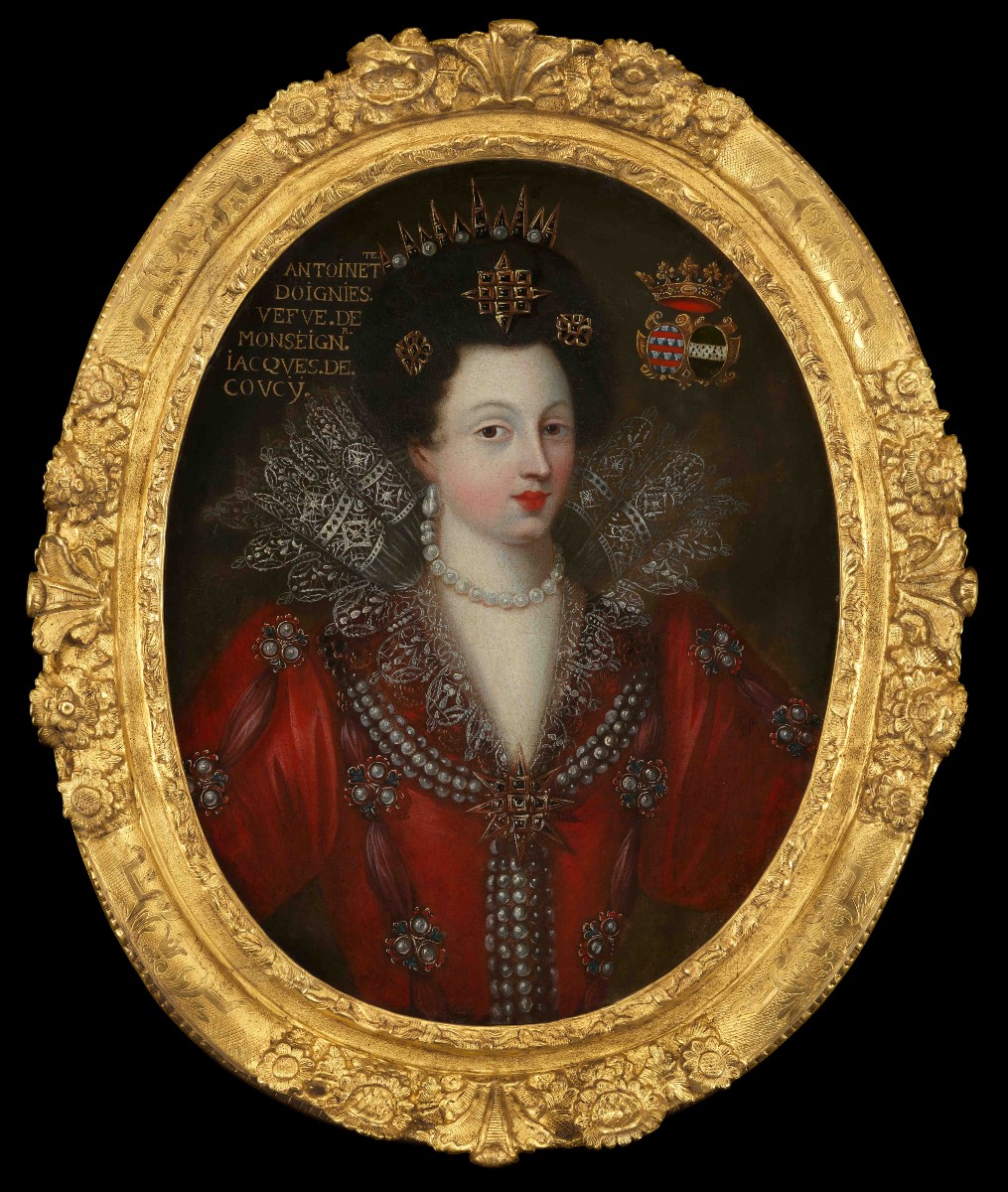


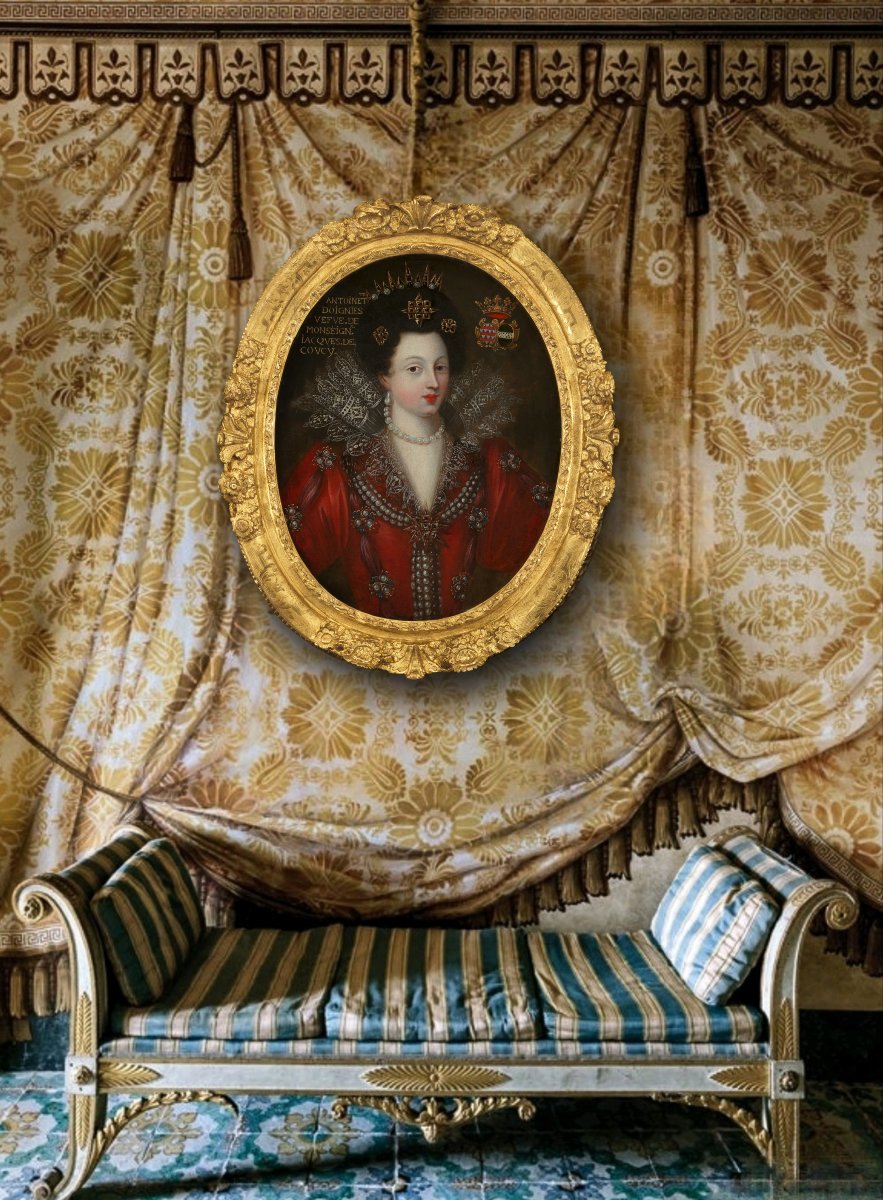
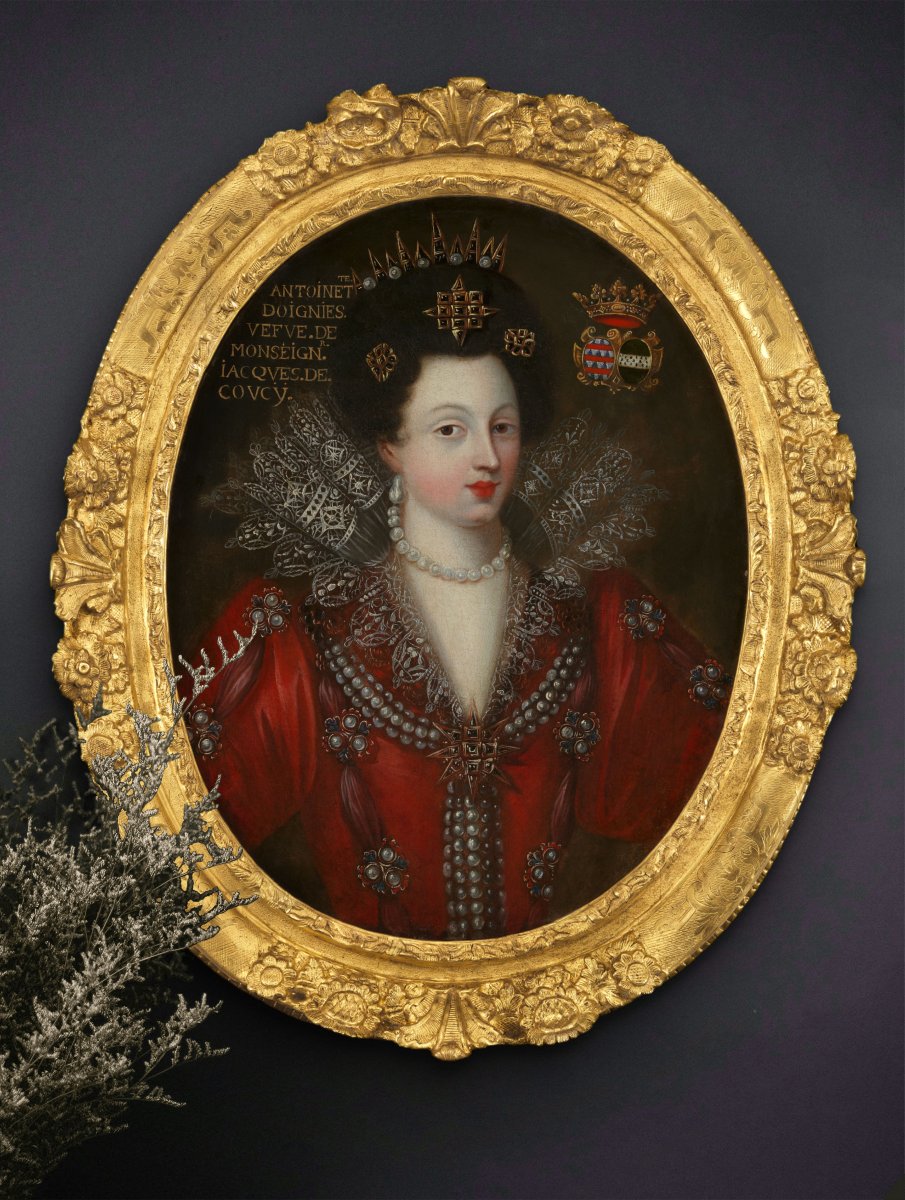

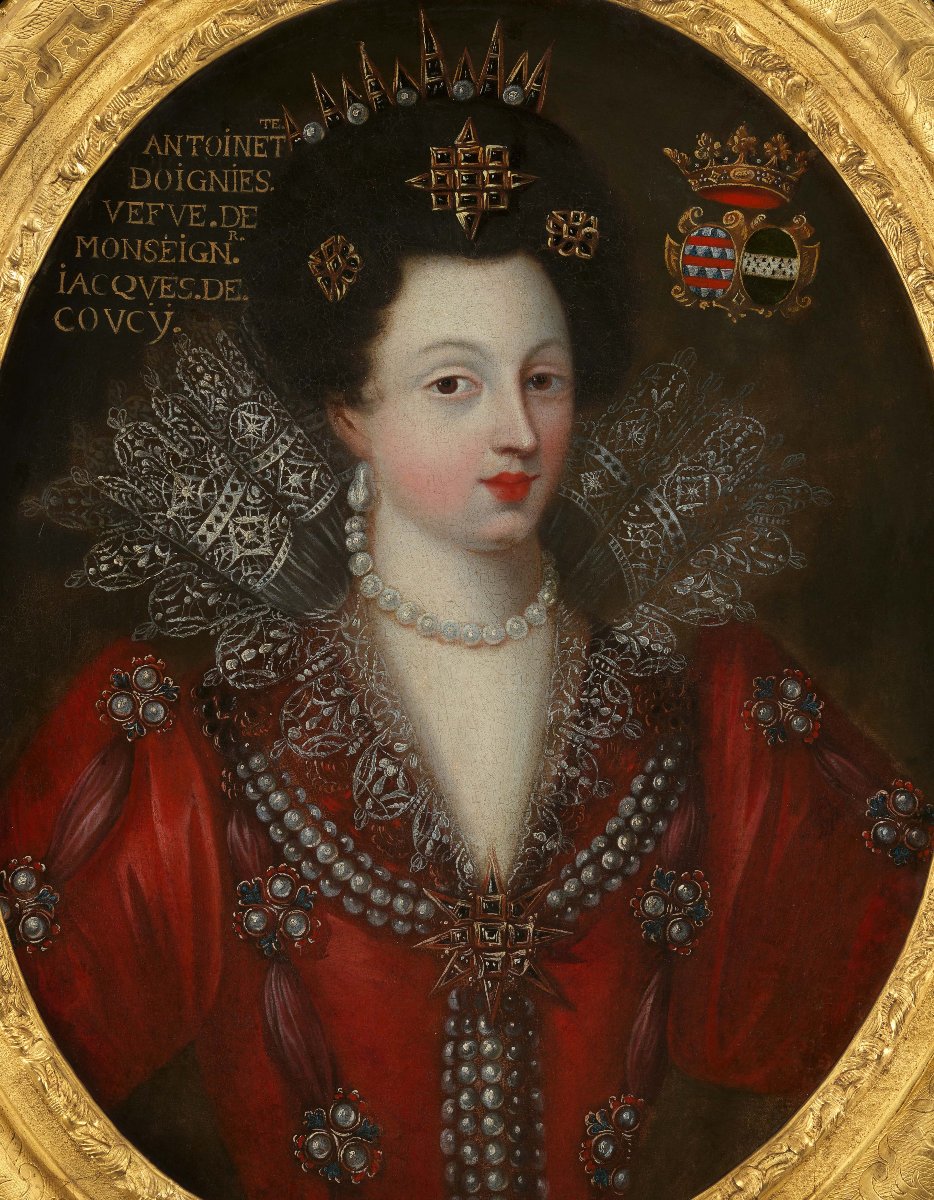
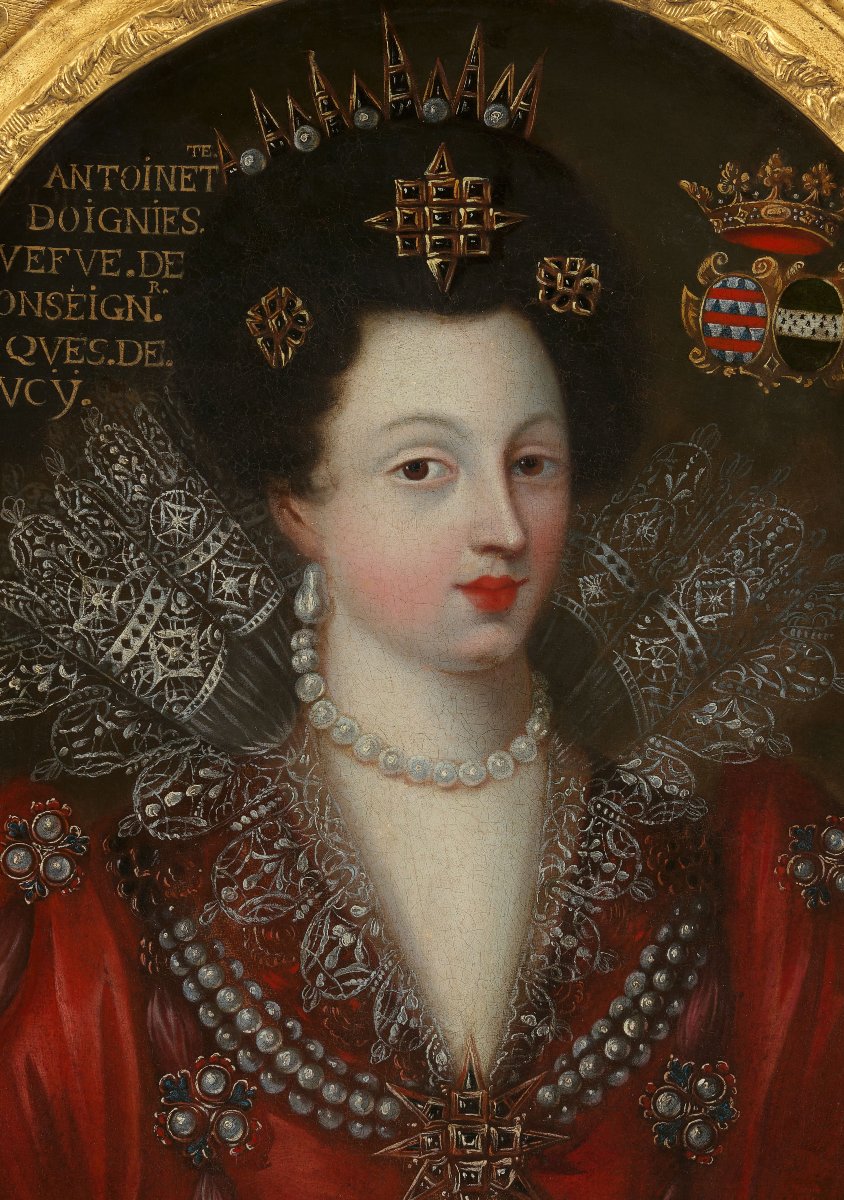
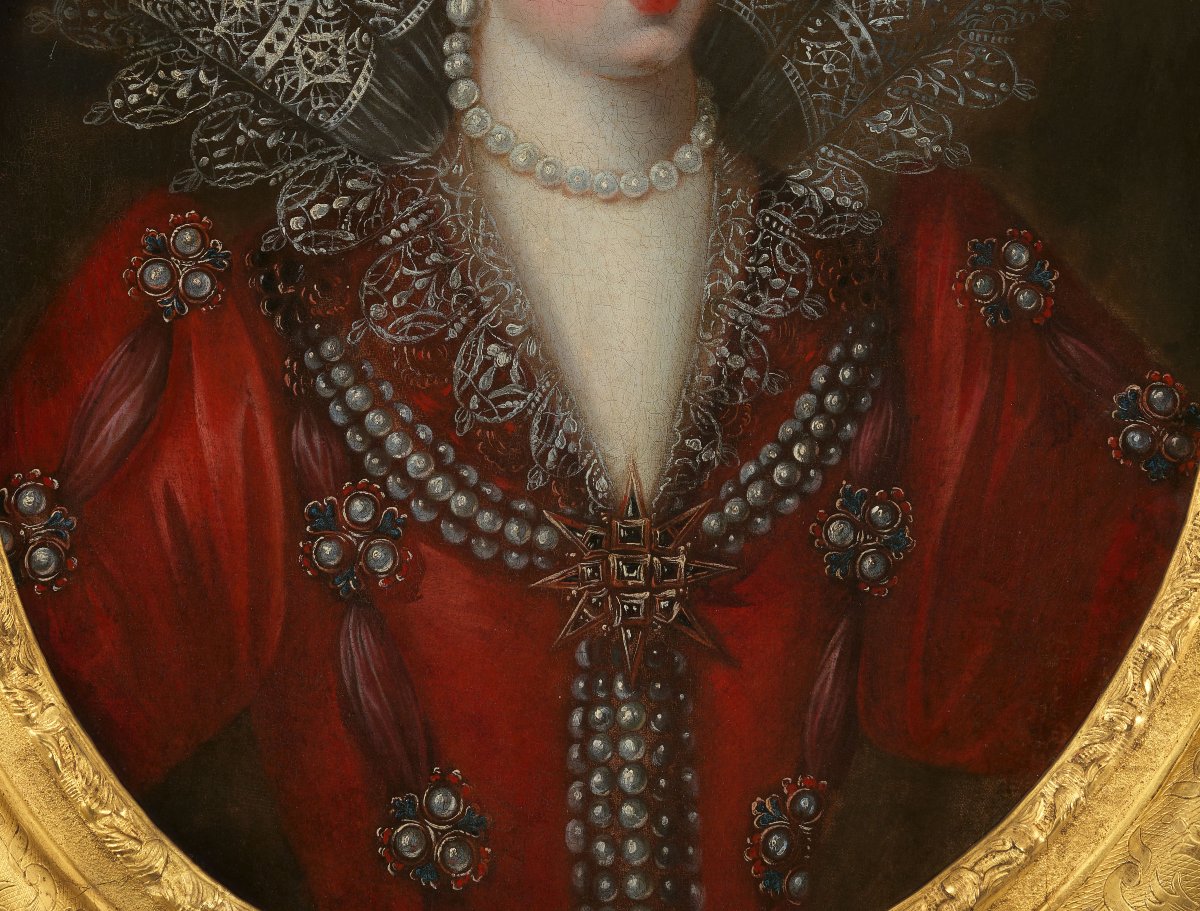
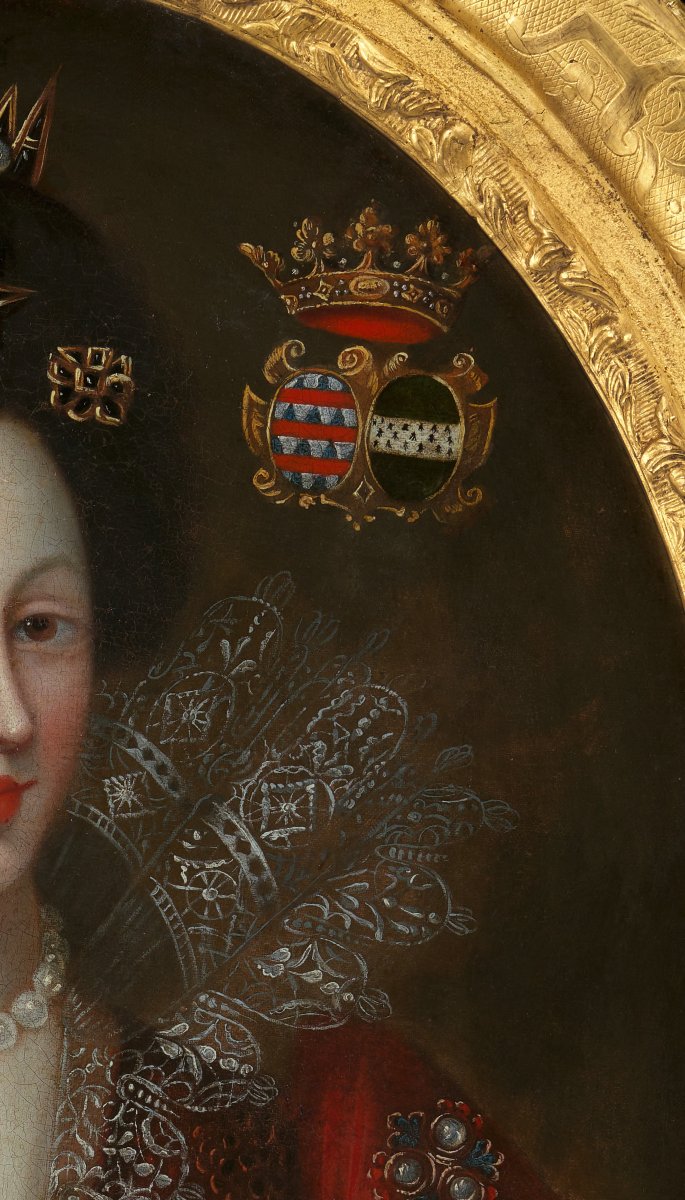
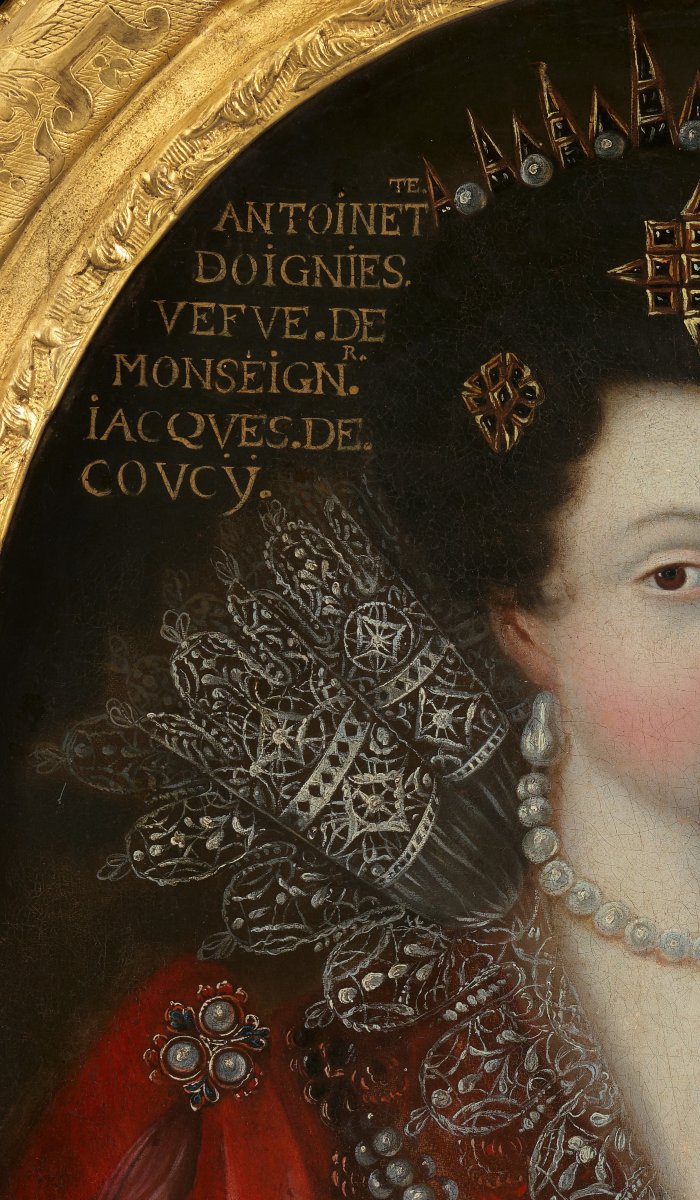
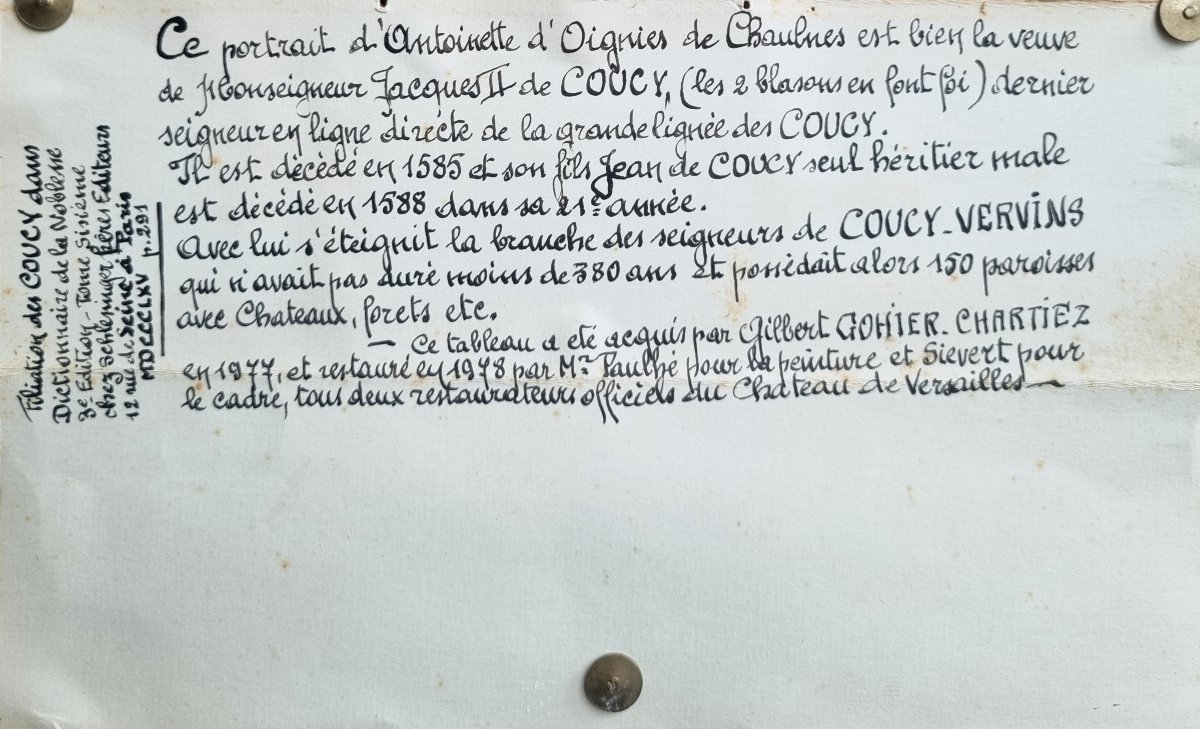

















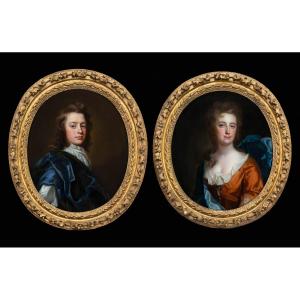
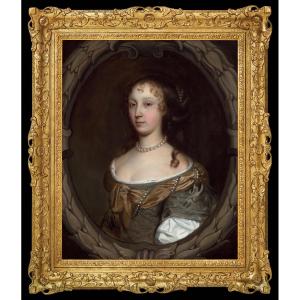
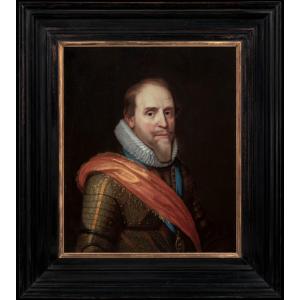

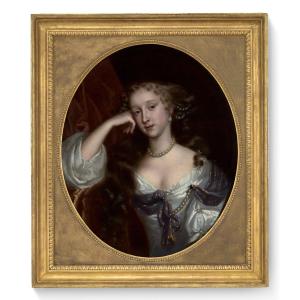
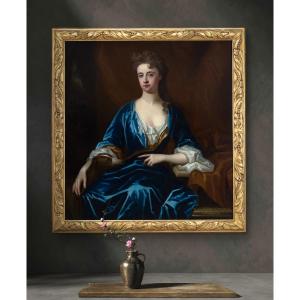
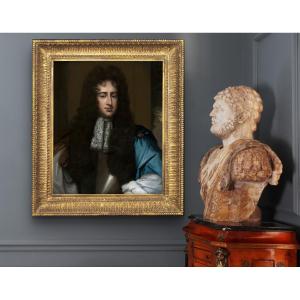
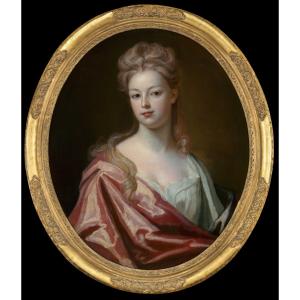








 Le Magazine de PROANTIC
Le Magazine de PROANTIC TRÉSORS Magazine
TRÉSORS Magazine Rivista Artiquariato
Rivista Artiquariato